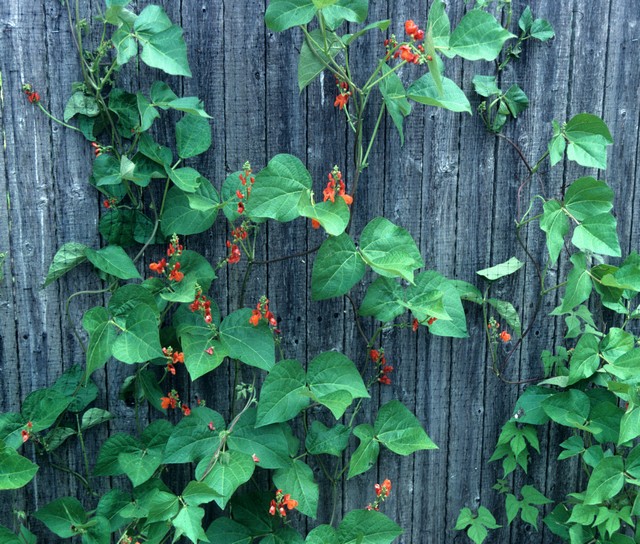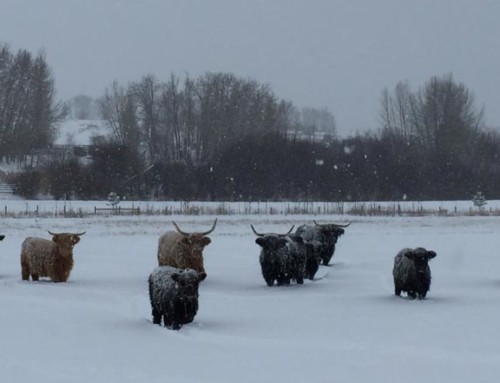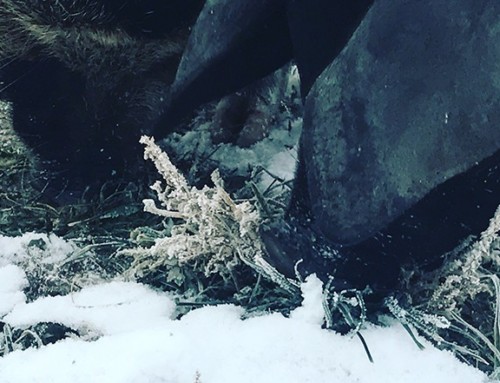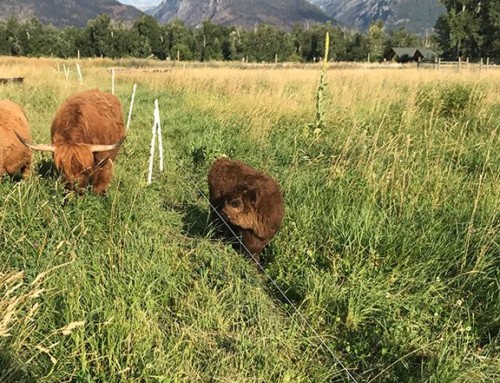Joel Salatin, the ‘Lunatic Farmer’ from Virginia (his words, not mine), proclaims that no matter the food producing system, there is always room to increase yield. This speaks to the efficiency of using available space, or in this case, the inefficiency of that use. Traditional production practices have tended to focus on a two dimensional view when considering planting designs and the varieties desired for seasonal harvest. Even seed packets speak to the ‘proper’ spacing of sowing to insure success and bountiful harvest. As a result, we see people ripping out parts of their backyards which is a lot of work and expense, or worse, picking up and moving to larger acreage that takes more time and cost to maintain. What if there was a different way?
Look no further than the a third dimension when developing your garden… ie. look to the Heavens. There are number of vertical food and flower varieties that can bolster your garden without impacting your available square footage. Vertical planting design offers both multiple benefits to your landscape; visually attractive, enhanced productivity, opportunity for microclimate effect, shading element, ease of implementing, structural support as a companion plant, and much more. Understanding how best to use these elements in your unique setting is left to the imagination.
Non-GMO corn is a favorite of ours out on the farm. We love the different varieties, colors and sizes, but a constant wind from the south, with the occasional gale, can flatten a maturing corn crop in minutes. How would we be go about using vertical gardening techniques to counteract this happening? The Native Americans were onto something when they planted beans at the same spot as their corn. The strong, winding beanstalk wrap around the corn giving it stability through the season. Not only is it a nitrogen fixing legume, but it’s the structural stability that promotes a tasty corn on the cob come the fall season!
Fall color and wildlife interactions are always a focus for us on the farm. The majority of our space is dedicated to livestock use and large volume food production, but the edge of these spaces allow for vertical elements to both compliment and complete the landscape. Virginia Creeper, grape vines and Hardy Kiwi are just a few vertical elements that can utilize these tight spaces, while providing native bird habitat and winter fodder, as well as fruit for jellies or eating fresh. By using both the exposed edge and existing fencing structure, the input is relatively easy and inexpensive.
The Montana Big Sky is a sight to behold. So much blue sky and bright sunshine. Though we are thankful for all the great State has to offer, getting a reprieve from the heat in summer has been a focus of our design. Whether relaxing on the patio, or considering the comfort of the livestock, introducing shade structures is paramount for our mutual health. Utilizing existing fences, buildings and other wooden structures, a vertical element can be utilized to provide seasonally timed shade where you want it. Draping a pergola with climbing roses or Passion Flower is one way. Another would be to fix edible hops onto an adjacent livestock pen. The plant reaches for the sky, all the while providing a cool area under its foliage for man and animal to rest and retain their energy.
Without knowing for sure, you probably have a structure on your property that has a south, southwest, facing sidewall. This particular orientation allows for maximum sun exposure during the growing season. Depending on the building material, the wall can hold onto that heat for a few hours after sunset, or possibly overnight. This aspect of design is called a microclimate, as no other place on the surrounding landscape has this pinpointed elevation in temperature. Again coming back to vertical planting varieties, we can use the small edge along the wall to grow up, not out. Perhaps you want to experiment with more tropical plant varieties that don’t tend to thrive in your climate, well, up and along the wall is your best bet for success.
Whether wanting more color in your landscape, a few more edibles on your plate or simply to witness more feathered friends at the bird bath, vertical gardening techniques can make that happen. Without the fuss of costly earthwork, hours of garden bed building or heaven forbid, moving, vertical design considerations will increase your productive footprint without breaking your budget. Next time out and about, make note of what your current landscape has to offer when it comes to vertical plant varieties. You will be glad you did!







